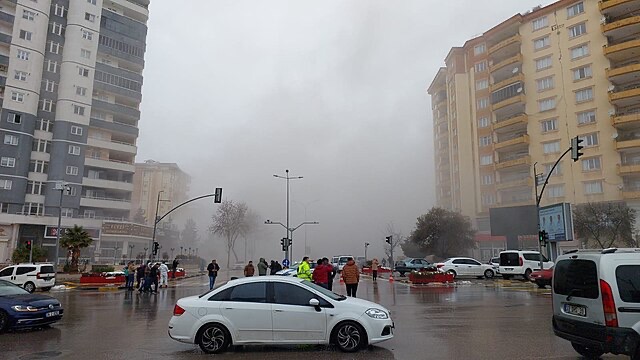On April 23, 2025, the city of Istanbul, Turkey, was jolted by a powerful 6.2 magnitude earthquake that struck just off the coast in the Sea of Marmara. Known for its historical beauty, bustling urban life, and strategic geopolitical significance, Istanbul is also, unfortunately, no stranger to seismic activity. As the tremors rolled through the city, residents poured into the streets, social media exploded with reports, and the nation collectively held its breath.
While early reports indicate that the quake caused no major damage or casualties, the psychological and cultural impact was immediate. For a city perched on the edge of a major fault line, each earthquake serves as a stark reminder of Istanbul’s vulnerability and the ever-present threat of “the big one” that seismologists have long warned about.
This article takes a deep dive into the latest earthquake—examining what happened, how the city responded, and what it means for the future of Istanbul’s seismic preparedness.
Earthquake Details: What Happened?
The earthquake struck at approximately 12:49 p.m. local time, sending tremors through Istanbul and surrounding provinces. The epicenter was pinpointed 28 kilometers south of Istanbul, near the island of Marmara Adası, in the Sea of Marmara. Initially recorded as a 5.9 magnitude tremor, it was later upgraded to 6.2 by Turkey’s Disaster and Emergency Management Authority (AFAD).
The quake occurred at a relatively shallow depth—making it more intense on the surface. Thousands of people across Istanbul reported feeling the shaking, and while there was no visible structural damage reported in the early hours, the psychological effect was immediate. Office workers rushed out of buildings, schools initiated emergency drills, and traffic came to a halt in several areas.
Seismic experts were quick to point out that while this quake was significant, it could have been much worse. Its offshore location likely prevented a disaster scenario.
Public Response: Fear, Relief, and Preparedness
As tremors subsided, Istanbul residents turned to social media to share their experiences—some describing their buildings swaying and furniture moving. “It felt like a truck had hit the building,” one user posted. Videos began circulating showing people evacuating buildings and gathering in parks and open spaces.
Authorities responded quickly. AFAD launched immediate assessments, while emergency services were put on standby across the region. Helicopters and drones were deployed to monitor any structural damage, and utility companies conducted inspections to ensure no disruptions to power, water, or gas lines.
Despite the fear, the atmosphere was largely one of relief—relief that no lives were lost, and that the city’s infrastructure, for the most part, held firm. Yet the quake also reignited concerns over Istanbul’s long-term disaster readiness, particularly with its dense population and aging buildings.
Istanbul’s Earthquake History and Risk Profile
Turkey sits on one of the most seismically active zones in the world, and Istanbul lies dangerously close to the North Anatolian Fault (NAF)—a major fault line responsible for numerous historic earthquakes. The most devastating in recent memory was the 1999 İzmit earthquake, which claimed over 17,000 lives and caused massive structural damage.
Seismologists have long warned that Istanbul is overdue for a major quake, potentially greater than 7.0 in magnitude. This recent 6.2 shocker, while not catastrophic, was another warning shot. Experts emphasize that it’s not a matter of “if,” but “when” the city will experience a large-scale earthquake.
Given Istanbul’s population of over 15 million, the stakes are incredibly high. The mix of old, unreinforced buildings with newer structures has created a patchwork of varying resilience levels throughout the city.
Seismic Infrastructure and Government Response Plans
Following the 1999 disaster, Turkey made substantial reforms in building codes and urban planning, especially in seismic-prone regions like Istanbul. New buildings are required to meet strict earthquake-resistance standards, but concerns remain about enforcement and the many older structures that predate these regulations.
The government has launched numerous projects, including the Urban Transformation Project, aimed at demolishing unsafe buildings and replacing them with modern, quake-proof structures. Yet, progress has been slow, hampered by bureaucracy, funding issues, and local resistance.
In light of this recent quake, pressure is mounting on municipal and national leaders to accelerate preparedness efforts. There’s growing demand for:
- Updated emergency evacuation plans
- More public education campaigns
- Earthquake drills in schools and workplaces
- Faster retrofitting of vulnerable buildings
Economic and Psychological Impacts
Even though the 6.2 magnitude quake caused minimal physical damage, its ripple effects are far-reaching. The economic costs of such events, including business disruption, emergency inspections, and future infrastructure reinforcement, are considerable. Small business owners reported losing a day’s trade as foot traffic decreased and emergency protocols shut down key sectors temporarily.
Psychologically, the earthquake reopened old wounds for those who lived through 1999. Istanbul’s population includes tens of thousands who lost loved ones, homes, or livelihoods in that disaster. For them, every tremor is a reminder—and a test—of whether lessons have truly been learned.
Mental health experts have already called for public outreach programs to provide support for those experiencing anxiety or trauma after the quake.



